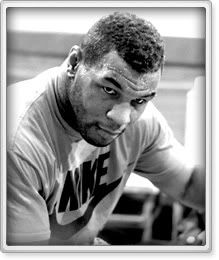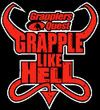Memories of Tokyo

By Bernard Fernandez
The thin, sturdy cardboard box was in my mail slot at the Philadelphia Daily News. I didn’t have to open it to know what was inside. It was another boxing book, one of many which have arrived through the years in the expectation that I would read it and, hopefully, write a favorable review.
Truth be told, my duties for my primary employer and for Maxboxing keep me so busy that I don’t have as much time for reading as I once did. There is a backlog of books about fights and fighters I hope to get around to eventually, but, when I do clear my schedule enough for a few precious leisure hours, I often plunge into a mystery novel by favorite authors like Tami Hoag and Robert Crais instead of another boxing biography. Lack of dedication, I suppose.
But this particular tome demanded my immediate attention. Tyson-Douglas: The Inside Story of the Upset of the Century, co-authored by Douglas’ former manager, John Johnson, and Bill Long, reminded me of the damndest eight-day road trip I have taken, a journey to the mysterious Orient and into the surreal that is forever branded into my memory.
Contributing to that is the fact that Buster Douglas’ 10th-round knockout of the seemingly unbeatable Mike Tyson is widely considered to be the biggest upset in boxing history, maybe in all of sports. It is not the best fight I have ever covered in person, nor the most dramatic, nor the most controversial – that would be the first matchup of Julio Cesar Chavez and Meldrick Taylor, which took place at the Las Vegas Hilton just 34 days after Tyson-Douglas – but it surely is the most momentous, on several levels.
As HBO blow-by-blow announcer Jim Lampley says in his foreword to the book, “In 32 years of network television sports commentary of every kind imaginable, I’ve never done a stranger or more memorable telecast.”
A lot of us, those fortunate enough to have been in the Tokyo Dome the Sunday afternoon of Feb. 11, 1990 (due to the 14-hour time difference, the fight started on Saturday night, Feb. 10, in the United States), have the very same impression. But while some truths about the event are universal, many recollections are individually colored to fit attendees’ very unique experiences.
The “Inside Story of the Upset of the Century”? Yeah, well, Johnson was there, but I’m not so sure about Long, a former Ohio State football player who knew Johnson from JJ’s days as a graduate assistant on Woody Hayes’ Buckeyes staff. But Johnson’s printed recollections largely center on Douglas; I’m not sure anyone has the real “inside” story on what was happening with Tyson, the supposed Godzilla who proved to be not quite the monster everyone had presumed he was.
Actually, Tyson had been dropping hints for some time that he was slipping, but the public chose to overlook them as the rusting Iron Mike continued on his knockout spree. There were rumors, sure, that his dedication to training had waned, and members of his original support crew of Cus D’Amato, Jimmy Jacobs, Bill Cayton, Kevin Rooney and Steve Lott either had died or been shunted aside in a purge orchestrated by Tyson’s control-freak promoter, Don King.
Much has been made of the fact that cornermen Aaron Snowell and Jay Bright did not even have an Enswell in their kit box as the hematoma above Tyson’s left eye enlarged to alarming proportions; they attempted to reduce the swelling with what appeared to be a balloon or a condom filled with ice water. But being surrounded by yes-men and sycophants is only a symptom of what brought down the fearsome Tyson; the underlying cause is that he had simply begun not to care about the profession that had made him so fabulously rich and famous.
(Continue Reading)






















No comments:
Post a Comment